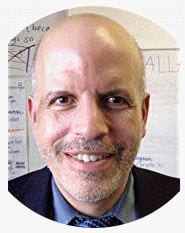
I’m obviously not the only tired teacher out there, and there are lots of reasons for it and possible ways society, districts and schools could help (see my post from last week: WE TEACHERS ARE NOT ALRIGHT & HERE ARE SOME IDEAS FOR MAKING THINGS BETTER).
I’ve also spent some time this week reflecting on my first years of teaching – a little over twenty years ago.
Then, it wasn’t uncommon for me to think, and sometimes say out loud, that I was amazed I was actually getting paid to do something I was enjoying so much.
What, I wondered this week, made it more energizing for me then than it is now (I still love teaching, but am much more stressed and have less energy for it than I had then)?
Of course, there are some obvious reasons:
- There weren’t the pandemic-related issues then that there are now (see my previous post about them).
- I was moving from an incredibly stressful nineteen-year career as a community organizer with the Industrial Areas Foundation, and teaching felt like, and was, a much more healthy and less stressful job.
- I was twenty years younger and, though I play a lot of Pickleball and basketball, we all tend to have less energy as we age.
Okay, apart from those issues, were there other reasons I felt so much more energized about teaching then?
Yes, there were, and here is what I came up with:
- Our class sizes were much smaller then – pretty close to twenty or so, if my memory serves me correctly. Thanks to a lawsuit from the California Teachers Association, the state funded the Quality Education Investment Act (QEIA), which provided funding to schools in lower-income communities to reduce class sizes for seven years. That money has gone away, as have the smaller class sizes.
- Our school was divided into Small Learning Communities where three hundred students pretty much stayed together for their high school career sharing twenty or so teachers. the Gates Foundation and the Carnegie Corporation provided funds to our district to to help make that happen, which also contributed to smaller class sizes. Each SLC had a Lead Teacher, who handled class scheduling for that group of students, and teachers and students had strong on-going relationships. That money has also gone away, as have our Small Learning Communities.
- We had a long-standing relationship with a professional development consultant, who provided regular training for us teachers. In addition, staff met regularly to reflect on what we were learning and how we were implementing it in our classrooms. All of this required time away from our classrooms and all teachers now know the refrain: “There are no subs.” It also doesn’t help that our district doesn’t want to pay them much.
Then, as now, we had great administrators and great students, and I still have great colleagues.
But when you combine the oh so many pandemic education-related issues with too many students in a class, not as much classroom and school community, not as many resources for professional growth and fewer opportunities for collegiality, it doesn’t look very pretty…



Recent Comments